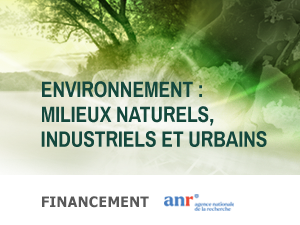With proven effects on the environment and health, synthetic polymer microparticles usually called microplastics (MPs) can accumulate in the food chain, release toxic substances or serve as vectors for other contaminants and pathogens. Urban areas are major sources and pathways for the transfer of MPs to water bodies. Their transfer to the natural environment involves complex transport processes through runoff and stormwater management systems. A better control and understanding of transport mechanisms and the estimation of MPs flows in urban water management structures during wet weather periods are crucial to better master their fate and to guide public policies on the management of urban wet weather discharges (UWWD) and reduction of these particle flows. Due to their central role in the management of UWWD, spilled flows from Combined Sewer Overflow structures (CSOs) are the main source of MPs in rivers. Installed in combined sewer networks, CSOs (more than 400 in the metropole of Lyon, France) make it possible to reduce the hydraulic load in wastewater treatment plants, by diverting the exceeding volumes without treatment into the surface waters during heavy rainfall events (expected to increase due to urbanization and climate change). The behavior of MPs during their transfer through CSOs must therefore be characterized: by means of a better understanding of the key mechanisms of interaction of the latter with other constituents conveyed in runoff and stormwater as well as involved hydrodynamic variables. This is the major challenge to be faced by the TRANSPLAST consortium focusing on the following goals (i) to develop an in situ sampling methodology on CSOs in urban areas leading to quantify the related MPs contribution to the contamination of receiving water bodies – for this purpose, an original combination of three analytical approaches is proposed, (ii) to identify and capture the interactions between MPs and the organic or inorganic fractions of the liquid and solid phases, (iii) to simulate the transport mechanisms of these particles and, (iv) to evaluate innovative trapping solutions to control MPs rejected by CSOs. To achieve these objectives, the project is organized into 5 tasks. The first task will be dedicated to qualify and quantify the flows of MPs in a dozen of CSOs located on the territory of the metropolis of Lyon, selected for their representativeness of multiple urban contexts. The hydrodynamic characteristics will be detailed on two CSOs equipped with monitoring devices and systems. The investigation of the MPs behavior in CSOs requires to track properly MPs in order to ease their quantification in complex matrices. The development and use of MPs doped with rare metals (D-MPs) will allow their traceability, the understanding of their interactions with the solid and liquid phases of urban effluents and the consequences on their settling velocities. These experimental laboratory investigations will be combined with experiments on small scale physical models of CSOs, in order to estimate the fraction of MPs transferred from the network to the natural environment and to improve their interception rate via original trapping structures. Numerical models of MPs’ transport will be developed and validated against experimental data taking into account the interactions with particulate and dissolved matter as well as the geometry of the CSOs studied. These validated models will be used to simulate multiphase flows in new structures with various hydrodynamic configurations in order to optimize their MPs’ trapping efficiency.
This program associates 5 public laboratories (DEEP, IMP, LMFA, LEHNA, LMI) and the results will bring new insights and strategies for practitioners and water authorities to better manage CSOs releases through MPs quantification methods and interception technologies.


